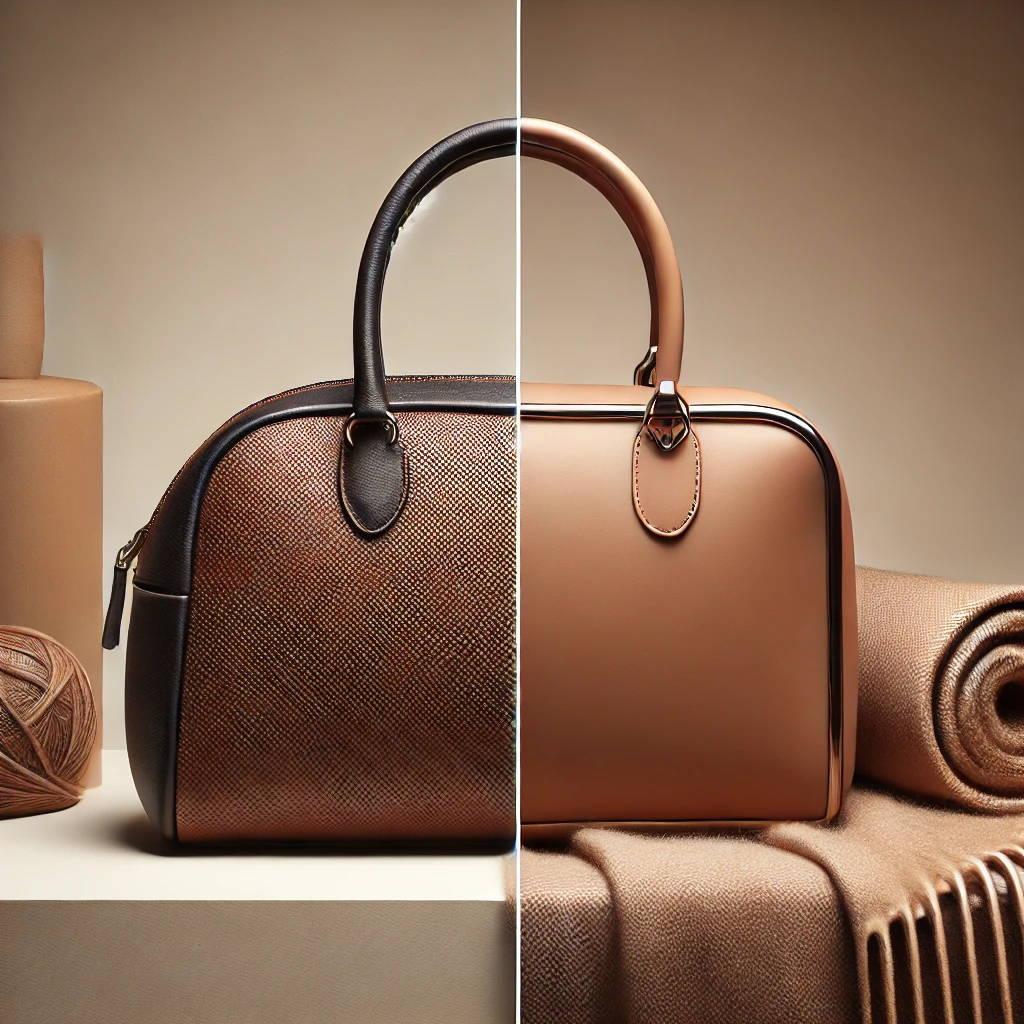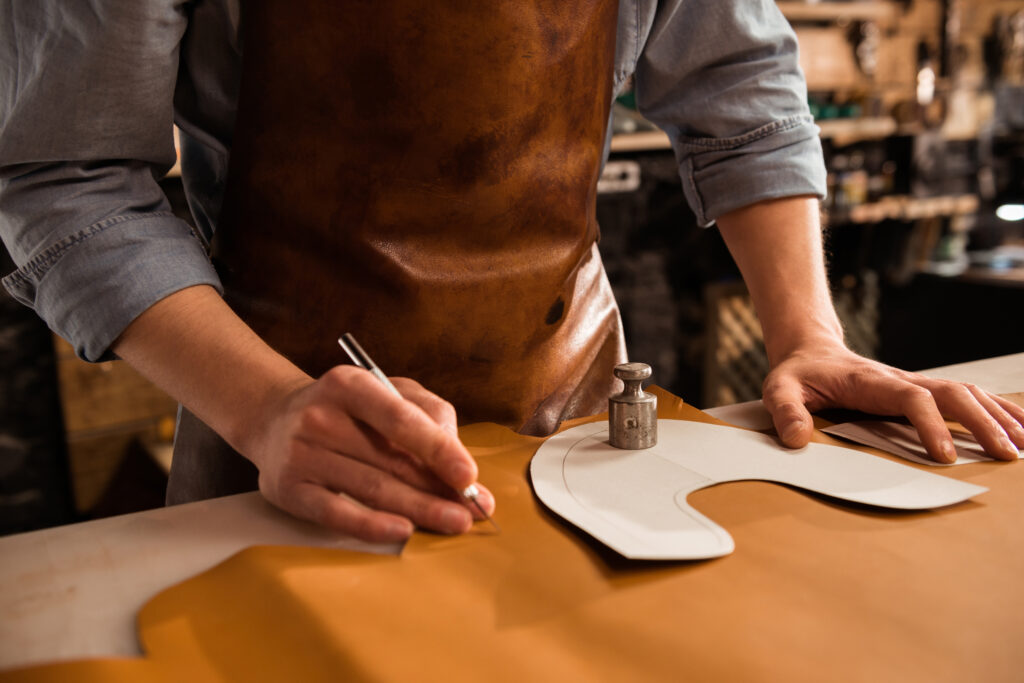A Private Members Association for discriminating luxury leather bag lovers
Free shipping within the United States
A Private Members Association for discriminating luxury leather bag lovers
Free shipping within the United States

If there’s one thing I’ve learned from being a leatherworker, it’s this: quality speaks for itself. A handmade luxury leather handbag is more than just an accessory; it’s a statement, a piece of wearable art, and often, an investment. Over the past decade, the rise of vegan leather has sparked a debate—should we trade centuries of craftsmanship for synthetic alternatives?
While vegan leather certainly has its appeal, real leather remains unparalleled in terms of quality, longevity, and timeless elegance. My experience working with premium leather has only reinforced one truth—nothing compares to it’s refinement and durability.

Luxury has always been synonymous with heritage. Some of the world’s most coveted fashion houses—Hermès, Louis Vuitton, Bottega Veneta—have built their reputations on the mastery of leatherwork. Owning a genuine leather handbag is not just about the material; it’s about the artistry behind it. Each piece is handcrafted, stitched, and treated to perfection, ensuring a level of quality that no mass-produced synthetic alternative can replicate.
I remember the first time I ran my hands over a friend’s Hermès Birkin she’d bought pre-loved—the smooth yet structured grain, the intoxicating scent of full-grain leather. There’s an undeniable authenticity in the way real leather feels and ages, something that no synthetic alternative has ever been able to achieve.
Real leather has an unmistakable texture; one that changes and evolves over time. Unlike synthetic materials that remain unchanging (or worse, deteriorate), real leather develops a patina—a soft sheen that adds to its beauty. This means that a premium leather bag actually improves with age, molding itself to its owner’s lifestyle. It tells a story.
Personally, I’ve had a men’s tan leather weekender bag for over 15 years, and every time I take it out, I’m reminded of the places it’s been. The handle has darkened slightly from the natural oils in my hands, the body has softened, but instead of looking worn out, it exudes the seasoned sophistication that only real leather can achieve.
One of the most crucial factors when investing in a luxury handbag is durability. A well-crafted leather bag, if cared for properly, can last a lifetime. Many high-end brands or independent ateliers even offer restoration services to keep their leather goods in pristine condition for decades. My own approach is to offer a buy back and resale service where I can provide whatever remediation the bag needs before it is sold as pre-loved.
In contrast, vegan leather alternatives—especially those made from PU (polyurethane) or PVC (polyvinyl chloride)—begin to crack, peel, and degrade within just a few years. I’ve seen this happen firsthand with an acquaintance who opted for a trendy vegan handbag, only for her to find it falling apart long before their real leather counterparts would have even needed conditioning.
Vegan leather may sound like an eco-friendly dream, but the truth is more complicated. Most vegan leathers are made from synthetic materials derived from petroleum-based plastics. While some brands have explored plant-based alternatives like mushroom or apple leather, the vast majority of vegan leather on the market today is neither natural nor biodegradable.
Sustainability is a crucial concern in fashion, but choosing vegan leather over real leather is not always the greener option. Unlike full-grain leather, which is biodegradable yet can last for decades, synthetic vegan leather contributes to microplastic pollution and requires fossil fuels for production.
I’ve asked around those leather makers who jumped on the vegan bandwagon. They were getting a lot of requests from clients. They also wanted to do the right thing but admitted that most of those bags were going to end up in landfills, unable to be repaired or recycled. This is the unfortunate reality—while vegan leather avoids animal products, it often creates a bigger environmental burden in the long run.
It’s important to acknowledge concerns about the leather industry, and many ateliers are having to put up sustainability statements on their websites. But in truth, all leather hides are byproducts of the food industry, meaning absolutely no animals are harmed solely for fashion purposes. In light of this, an argument can even be made for more leather production since it removes unused hides from landfills.
When a real leather bag reaches the end of its lifecycle, it naturally decomposes over time, unlike synthetic alternatives that persist in landfills for centuries. Investing in a high-quality, handmade leather bag means participating in a more circular fashion economy—one that values durability over disposability.
A premium leather handbag is not just an accessory—it’s an asset. Many classic designer leather handbags appreciate in value over time. A Chanel Flap Bag purchased ten years ago was priced at approximately $4,900. As of 2025, the same bag retails for $10,800, reflecting a significant appreciation over the past decade.
It’s easy to be tempted by the lower price tag of vegan leather bags, but when you factor in how often they need replacing, the cost per wear tells a different story. A $2,500 leather handbag that lasts 20 years is a far better investment than a $300 vegan leather bag that needs to be replaced every two years. True luxury is about longevity, not disposability.
At the end of the day, luxury is about more than just aesthetics—it’s about quality, longevity, and sustainability. While vegan leather may seem like a modern solution, it falls short in durability, environmental impact, and investment value.
For the woman who values timeless elegance, craftsmanship, and the finer things in life, real leather remains the ultimate choice. It’s not just about owning a bag—it’s about owning a piece of functional history, a symbol of sophistication that will only grow more beautiful with time.
So when you’re considering your next luxury handbag purchase, ask yourself: do you want something fleeting, or do you want something forever?
Nerina Leatherworks is a private members association operating in the private domain
See terms of service